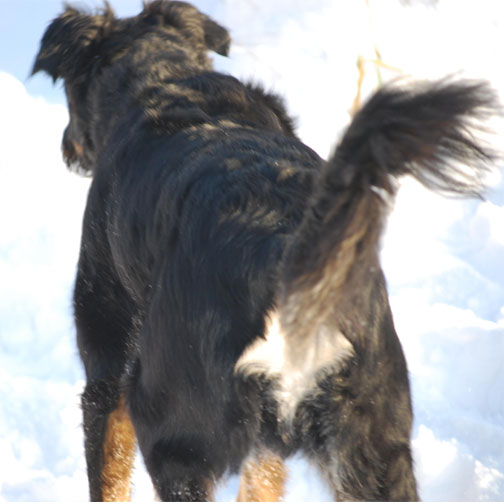We’ve all seen it. Suddenly your otherwise well-behaved dog begins to do that awkward scoot on his or her bum along the carpet, rug, or grass.
This funky move is otherwise known as dog scooting, and unlike other nasty habits, your dog might have good reason to scoot. A dog dragging his or her bottom along the ground is almost always a sign of irritation in the area. The cause could be anything from infection to inflammation, and while it may not be pretty, your pooch will thank you for taking notice.
1. Anal Sac Issues
Dogs tend to be particularly interested in one another’s rear ends. This is due to the particularly pungent, fatty substance produced by two anal sacs on either side of a dog’s anus. But don’t worry, unlike your pet’s doggie friends, you shouldn’t be able to detect the distinct smell unless there is an issue.
Speaking of issues… The anal sacs can become abscessed, blocked, or inflamed causing pain and discomfort to your furry friend. This is more common in smaller breeds, which might explain why Princess isn’t acting so lady-like. In an attempt to alleviate the irritation, your dog may begin to rub its anal region on the floor. Other symptoms of anal sac problems might include swelling around the anus and trouble defecating. The dog scooting could also be paired with equally unflattering chewing or licking of the area.
If you suspect that your dog is suffering from anal sac issues, visit your vet. The treatment can be as simple as increasing dietary fiber intake, manually draining the sacs, or a round of antibiotics to treat an infection.
2. Gastrointestinal Problems
Whether it’s diarrhea or constipation, problems doing their business can cause your dog some major discomfort and many times, the area beneath your dog’s tail can become contaminated with feces. Yes, we’re talking about poop. While experiencing some of these gastrointestinal problems, feces can become stuck in the hair around your dog’s anus. Not surprisingly, this contamination can eventually cause irritation. Can you imagine skipping the wipe after you go? As long as there are no signs of infection, you can alleviate the irritation (and consequent dog scooting) by simply trimming away the dirty hair and washing the area with a mild soap and warm water.
Just remember that if your dog has had diarrhea or has been constipated for more than a day, you should talk to your vet.
3. Worms
Though less common, tapeworms can cause your dog to start dragging its butt around your living room. A worm problem is easy to diagnose by the appearance of small tapeworm segments that look like little grains of rice around your dog’s anus. While easy to treat – usually just a single dose or oral or injectable medication – preventing tapeworms from recurring requires that you go to the source. Tapeworms are usually the result of the dog swallowing worm-infested fleas. To control the fleas, ask your vet about oral or topical medications.
4. Rectal Prolapse
Dog scooting can be a sign of more serious conditions as well. Recal prolapse is a condition in which the rectum (the last portion of the large intestine) extends beyond the anus. This protrusion can be the result of straining due to constipation or severe diarrhea. If you spot an elongated, cylindrical mass sticking out of your dog’s anus, see your vet immediately as treatment requires replacing the prolapse and taking steps to ensure it will not recur.
5. Other Causes of Dog Scooting
Wounds, injuries, or tumors can also cause irritation that may cause your dog to drag its bottom. Look out for swelling, growths, redness, bruising, or discharge. These symptoms could indicate issues that require immediate treatment.
So the next time your dog starts to do the doggie scoot, it just might be time to take a look down there.
To see even more information about dog scooting, click here.

